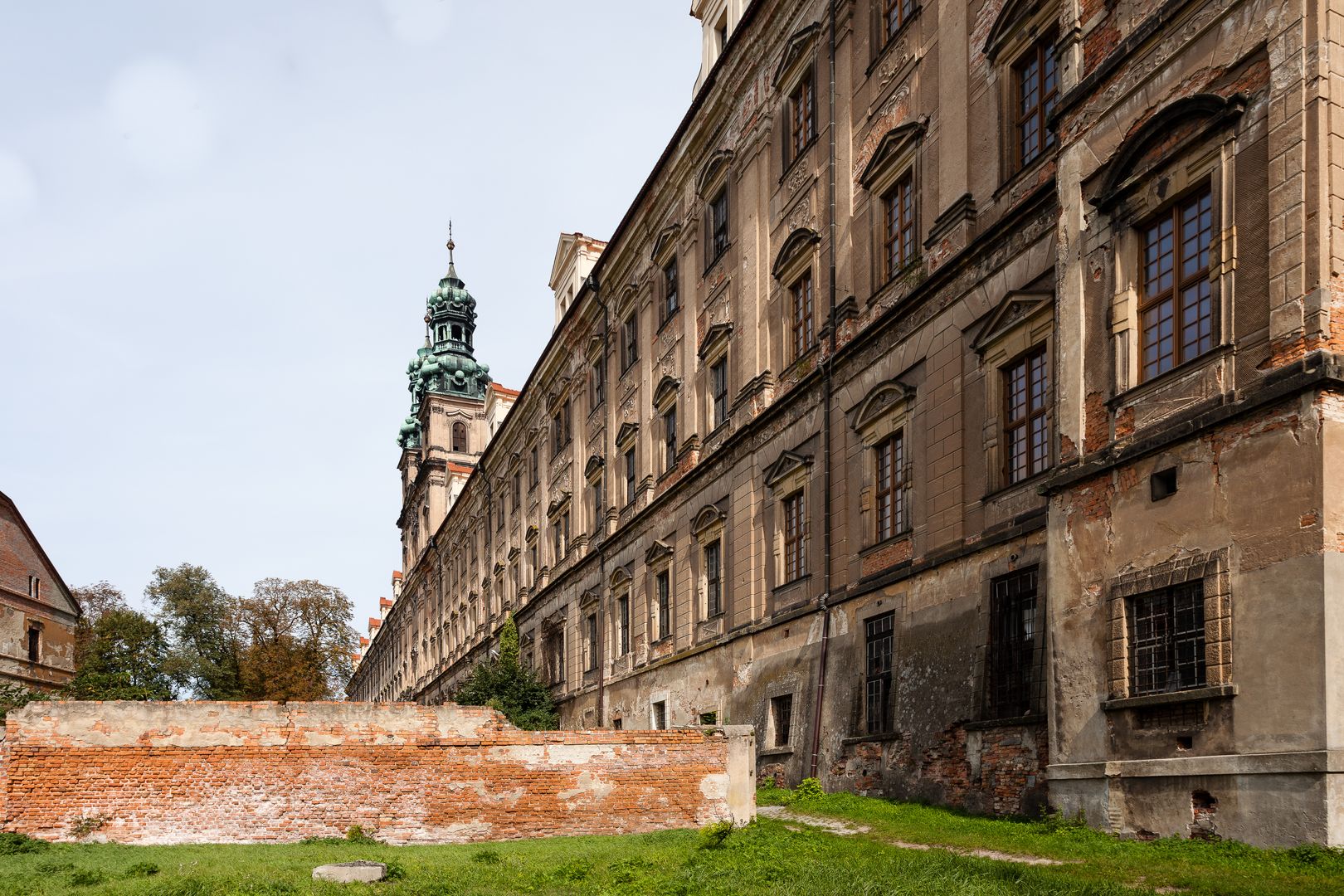Lubiąż Cistercian Abbey
8.33

Overview
The monastic complex in Lubiąż is the second largest religious site in the world, with its Baroque architecture, featuring the longest Baroque façade in Europe, covering an impressive area of two and a half hectares of roofs. The complex, consisting of the Basilica of the Assumption of the Blessed Virgin Mary, the monastery, the abbots' palace, and the Church of St. James, is renowned not only for its rich architecture but also for its historical connections to the Piast dynasty, whose mummies are housed in the monastery crypts. Since the 1970s, the site became the focus of treasure hunts by the PRL's Security Service, linked to the legend of "Wrocław's gold." In reality, thousands of human bones were discovered there, a phenomenon of the past pointing to Cistercian monks rather than camp prisoners. After 1989, the monastery's restoration began, leading to the opening of many historic halls, including the Prince's Hall, known for its Baroque frescoes. Today, Lubiąż is also a venue for numerous cultural events, such as festivals, concerts, and art exhibitions, as well as activities by the Lubiąż Foundation, which organizes recurring events attracting tourists. Music videos have been filmed on the monastery grounds, adding to its appeal. Historically, the monastery played a significant role in the region, serving as an important center of culture and literature, and as the burial site of notable figures like Bolesław the Tall and Henry III of Głogów. The Cistercian abbots contributed to the development of architecture and art, and political changes, including the dissolution of the order in the 19th century, influenced the monastery's subsequent fate, which during the COVID-19 pandemic was repurposed as a psychiatric hospital. Thus, Lubiąż is not only an architectural masterpiece but also a living monument to the history and culture of Silesia.
Location
2025 Wizytor | All Rights Reserved